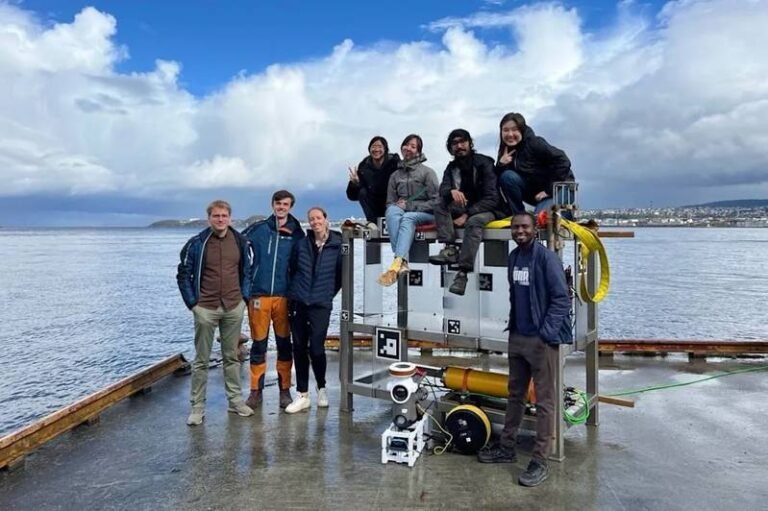Revolutionizing Underwater Robotics: Leonard Günzel Leads Project to Make Blueye ROVs Autonomous
Leonard Günzel, a PhD candidate at the Department of Marine Technology at NTNU, is spearheading a groundbreaking project to make Blueye ROVs autonomous. The primary objective of this project is to eliminate the tether currently connected to the Blueye Surface Unit, enabling the ROV to function independently from a docking station on the seafloor.
The Importance of Tethered Systems
Blueye ROVs are traditionally connected via a tether to ensure rapid, stable, and reliable communication between the drone and the operator. The tether facilitates real-time data transmission directly to the surface, providing operators with live video and sensor data crucial for precise and safe underwater navigation. Additionally, control signals are transmitted down to the ROV through the tether, allowing operators to continuously adjust direction, speed, and camera angle, ensuring complete control of the drone at all times.
A tethered system offers a straightforward setup, eliminating the need for complex wireless solutions or external base stations. It is versatile and mobile, capable of being deployed from various locations such as shore, boats, or docks. Moreover, the tether ensures stable power and signal transmission, enhancing reliability in challenging underwater environments.
Transitioning from ROVs to AUVs
Remotely operated vehicles (ROVs), unlike autonomous underwater vehicles (AUVs), require a surface-based operator to control the drone. Converting ROVs into AUVs can unlock new possibilities for underwater operations, making them more efficient, cost-effective, and capable of operating autonomously in harsh environments for extended periods.
Advancements in Autonomous Underwater Systems
After months of simulations and system development, Günzel and his team have successfully completed their first field operation in the Trondheim fjord. This milestone marks a significant technological advancement in autonomous underwater systems, demonstrating the feasibility of compact ROVs like the Blueye X3 operating autonomously.
The project team has enhanced both the underwater drone and the necessary infrastructure for long-term autonomous underwater operations. This includes implementing a USBL system for accurate navigation over distances ranging from 100 to 500 meters and returning to a docking station on the seafloor.
Empowering Developers with Blueye SDK
To support the development of autonomous capabilities, Blueye provides access points for control through the Blueye SDK. This open-source SDK allows developers and students to build custom control algorithms, automate missions, and explore new applications for underwater robotics.
Future Prospects and Collaborations
The project lays the foundation for future research in energy-efficient surveys, multi-robot coordination, infrastructure inspections, and full mission autonomy. Günzel is eager to delve into situational awareness and perception and anticipates cutting the tether for good in the upcoming semester.
Part of the SAFEGUARD initiative, the project leverages years of research and development at NTNU, with the NTNU VISTA Center for Autonomous Robotics Operations Subsea (CAROS) playing a vital role in advancing autonomous underwater systems.

